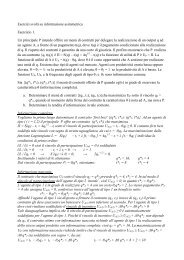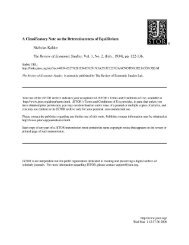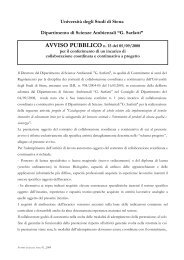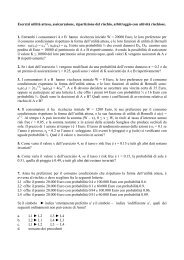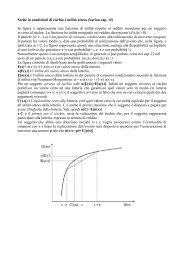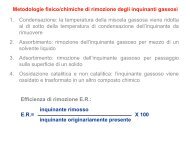Stabilisation Policy in a Closed Economy Author(s): A. W. Phillips ...
Stabilisation Policy in a Closed Economy Author(s): A. W. Phillips ...
Stabilisation Policy in a Closed Economy Author(s): A. W. Phillips ...
Create successful ePaper yourself
Turn your PDF publications into a flip-book with our unique Google optimized e-Paper software.
JUNE 1954] STABILISATION POLICY IN A CLOSED ECONOMY 291<br />
case of a closed economy with government ignored and with<br />
constant <strong>in</strong>vestment it is equal to the marg<strong>in</strong>al propensity to<br />
save. In all the illustrations given below the marg<strong>in</strong>al leakage<br />
is assumed to be 025.<br />
The response of production to changes <strong>in</strong> demand is assumed<br />
to be gradual and cont<strong>in</strong>uous. For aggregative models this is more<br />
realistic than the usual assumption that production changes <strong>in</strong><br />
sudden jumps. Even if each producer were to have a rigid<br />
production plan which he altered only at <strong>in</strong>tervals of several<br />
months, the plann<strong>in</strong>g periods of the thousands of <strong>in</strong>dividual<br />
Time constant of the lag<br />
-1 -<br />
Time <strong>in</strong> years<br />
0<br />
0<br />
-<br />
*25 50<br />
i<br />
*75 1[00 1 25 1-50 175 2'00<br />
-25- -\632<br />
-.50-<br />
-75-.--<br />
\ Production<br />
-I 0- -<br />
A B Demand<br />
FIG. 1.-S<strong>in</strong>gle production lag.<br />
producers would overlap, and the response of aggregate pro-<br />
duction to a sudden change <strong>in</strong> aggregate demand would conse-<br />
quently be more nearly approximated by a cont<strong>in</strong>uously chang<strong>in</strong>g<br />
variable than by one chang<strong>in</strong>g only at discrete <strong>in</strong>tervals of time.<br />
To obta<strong>in</strong> a model <strong>in</strong> which this cont<strong>in</strong>uous change is represented,<br />
a distributed time lag is <strong>in</strong>troduced by the hypothesis that when-<br />
ever the production flow is different from the flow of demand, the<br />
production flow will be chang<strong>in</strong>g <strong>in</strong> a direction which tends to<br />
elim<strong>in</strong>ate the difference and at a rate proportional to the difference.<br />
The implications of this hypothesis are illustrated <strong>in</strong> Fig. 1,<br />
which shows the change that would occur <strong>in</strong> production if, from<br />
an <strong>in</strong>itial equilibrium position, demand were to fall by one unit<br />
at time zero and to rema<strong>in</strong> constant thereafter, on the assumption<br />
that the rate of change of production, measured <strong>in</strong> units per year per<br />
year, is four times the difference between demand and production,



